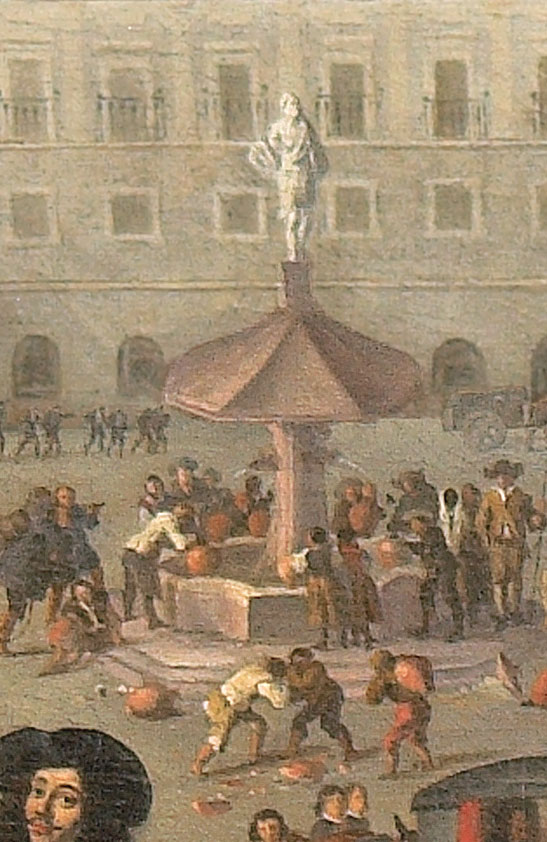
We find a large fountain, with the statue of Apollo atop it. Around it, we see several people who had travelled there to help themselves to water, as was usually done in the capital in the 17th century.
The painter was not indifferent to the quarrels that always occurred at fountains, as a result of the search for the best water.The fountain of Apollo was built by the Lisbon City Council at the beginning of the reign of king João IV to supply water to the Terreiro do Paço area. The work was handed over to the architect Bartolomeu de Sousa, who constructed it between 1652-1655. It was a polygonal fountain, in the shape of a shell, with four copper pipes. The statue of the God Apollo with a lyre was erected on the set. The existence of a fountain for water supply became an additional reason for the convergence of more people to the Terreiro do Paço, which was the centre of the city of Lisbon at the time.
In 1657, the fountain of Apollo or the new fountain of Terreiro do Paço is already documented in the work of the writer Francisco Manuel de Melo – A visita das Fontes (“The Fountains' Visit”) – who conceived around it an allegorical narrative with four characters: the new fountain of Terreiro do Paço, the statue of Apollo, the soldier who watches over the fountain and the Old Fountain of Rossio. The four observe the various social types that cross the Terreiro on their way to the Paço da Ribeira, identifying them by their used clothes (noblemen, clerics, magistrates...), denouncing their defects and exposing moral truths and ethical principles.